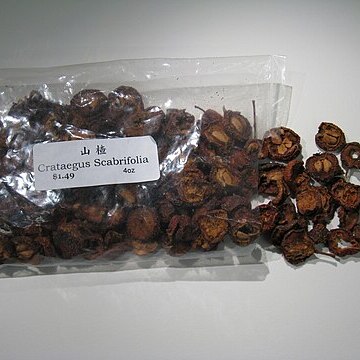Trees deciduous, to 10 m tall; branches usually unarmed. Branchlets purplish brown when young, grayish brown when old, terete, initially glabrous or subglabrous; buds purplish red, triangular-ovoid, glabrous. Stipules caducous, linear-lanceolate, ca. 8 mm, membranous, glabrous, margin glandular serrate, apex acuminate; petiole 1.5–4 cm, glabrous; leaf blade ovate-lanceolate to ovate-elliptic or rhombic-ovate, 4–3 × 2.5–4.5 cm, abaxially villous only along midvein and lateral veins, pilose or subglabrous, adaxially slightly pubescent when young, glabrescent, base cuneate, margin sparsely irregularly and doubly obtusely serrate, usually not lobed or those of sterile shoots sparsely irregularly 3–5-lobed apically, apex acute. Corymb or compound corymb, 4–5 cm in diam., many flowered; peduncle glabrous; bracts caducous, linear-lanceolate, membranous. Pedicel 5–10 mm, glabrous. Flowers ca. 1.5 cm in diam. Hypanthium campanulate, abaxially glabrous. Sepals triangular-ovate or triangular-lanceolate, 3–4 mm, abaxially glabrous. Petals white, suborbicular or obovate, ca. 8 × 6 mm. Stamens 20. Ovary grayish white tomentose apically; styles 3–5. Pome yellow or reddish, depressed-globose, 1.5–2.5 cm in diam., glabrous; sepals persistent; pyrenes 5, smooth on both inner sides. Fl. Apr–Jun, fr. Aug–Oct. 2n = 34*.
More
A small tree. It grows 10 m tall. It loses its leaves during the year. It usually does not have thorns. The leaves are narrowly oval and 4 cm long by 3-5 cm wide. There are many flowers in a group. The flowers are white. The fruit are yellow to red and 1.5-2.5 cm across.
Can be grown by seedlings. Seeds needs scarification.


